1. Snout Shape: The Key to Identifying Which One You’re Facing

The most noticeable difference between alligators and crocodiles is the shape of their snouts. Alligators have a broad, U-shaped snout that is designed for crushing tough prey like turtles and hard-shelled mollusks. This rounded snout allows them to generate powerful bite forces while maintaining a firm grip on slippery prey. According to Owlcation, crocodiles, on the other hand, have a V-shaped snout that is much more pointed and narrow. This sharp design helps them catch fish and other fast-moving prey with precision, making them excellent ambush predators in open water.
If you find yourself near one of these reptiles, take a moment to observe the shape of its snout. A rounded snout likely means you’re dealing with an alligator, while a sharp, pointed one suggests a crocodile. Knowing this distinction can be crucial in determining what kind of danger you’re in. Alligators are generally less aggressive toward humans unless provoked, whereas crocodiles tend to be much more territorial and prone to attacking anything that enters their space.
2. Location Matters: Where You’re Most Likely to Encounter Each Reptile
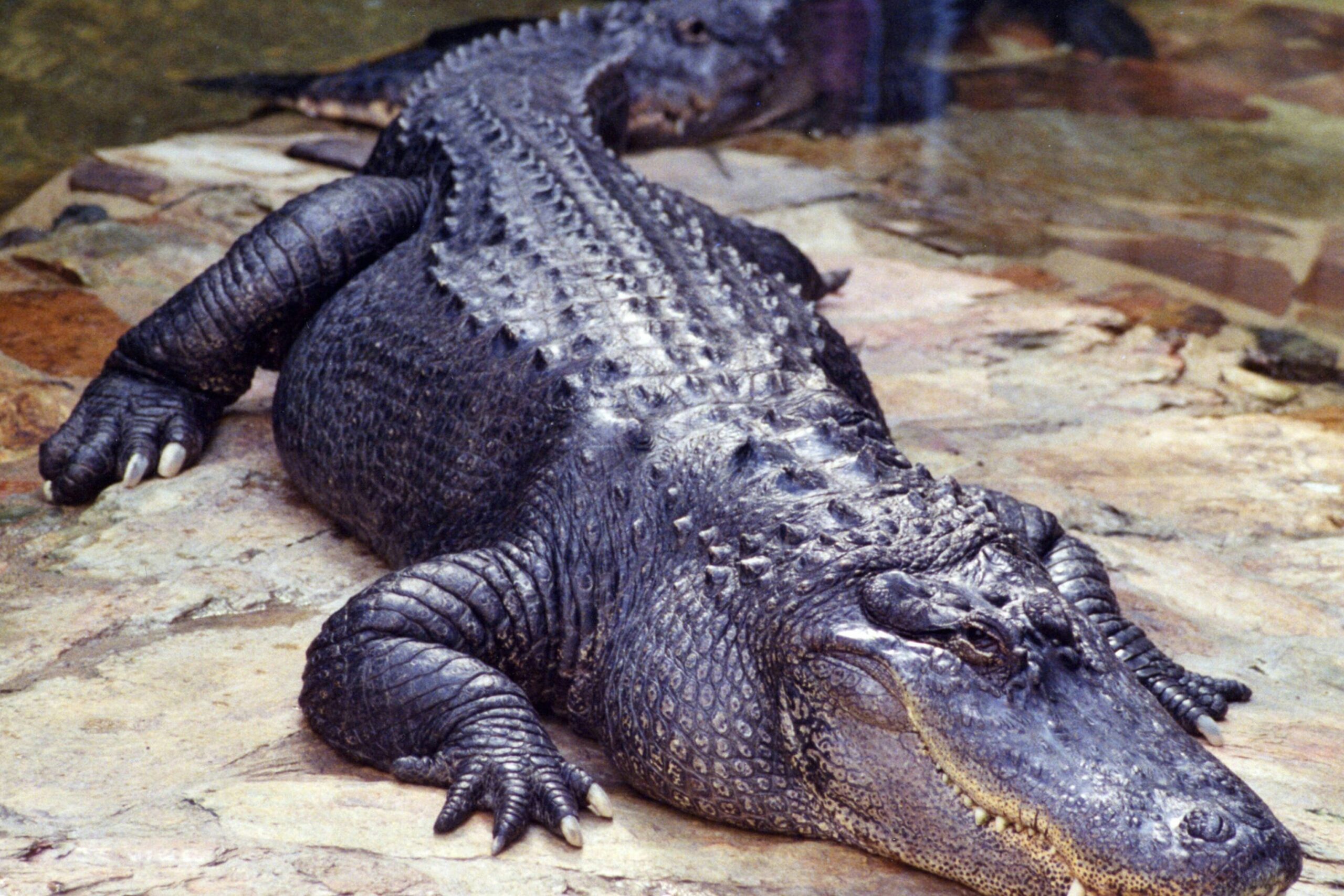
Another major difference between alligators and crocodiles is where they are commonly found. Alligators primarily live in freshwater environments such as swamps, marshes, rivers, and lakes. They are native to the southeastern United States, particularly in states like Florida and Louisiana, as well as parts of China, according to LiveScience. Crocodiles, however, are more adaptable and can thrive in both freshwater and saltwater environments. They are found in many regions of the world, including Africa, Australia, Southeast Asia, and Central and South America.
Understanding this distinction can be a life-saving factor when traveling to different locations. If you’re in the United States, you are more likely to encounter an alligator unless you’re in South Florida, where American crocodiles also reside. However, in many tropical regions outside the U.S., crocodiles dominate the waterways and pose a significant threat to humans. Recognizing their preferred habitats can help you avoid areas where they are most active, reducing your chances of an unexpected encounter.
3. Color Differences: How to Spot the Right Predator
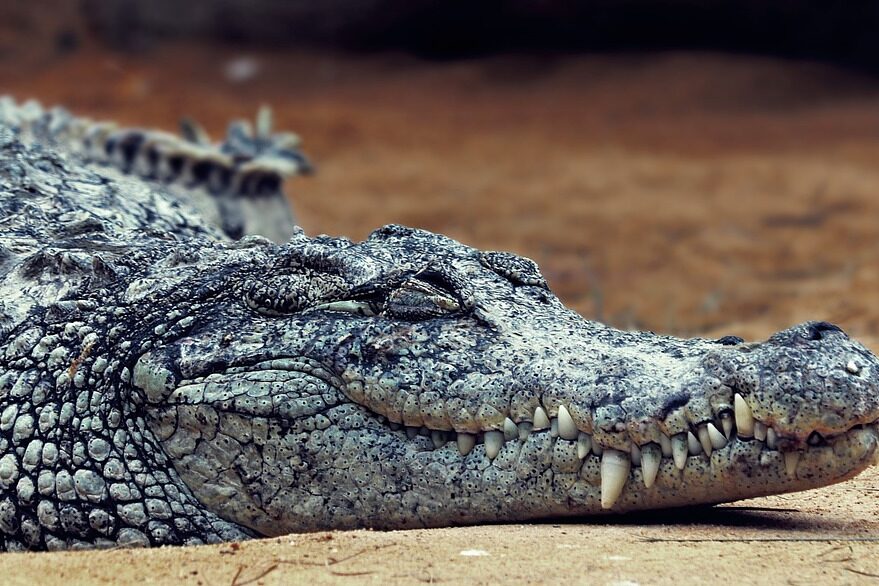
The coloration of alligators and crocodiles can help you distinguish between them, especially in murky water where only parts of their bodies are visible. Alligators are typically darker in color, often appearing black or dark gray due to their habitat in swampy areas with abundant vegetation, according to CajunEncounters. Their darker skin provides excellent camouflage in shaded freshwater environments, allowing them to blend in with muddy riverbanks and still waters. Crocodiles, in contrast, have a lighter coloration, usually appearing olive green, tan, or brown. This coloration is ideal for coastal and saltwater environments, where they blend in with sandy shores, mangroves, and riverbanks.
If you see a large reptile in the water and only catch a glimpse of its back or tail, its color can give you a major clue about what you’re dealing with. A dark, almost black figure likely means an alligator, while a lighter, brownish-green body suggests a crocodile. This knowledge can help you assess whether you should be extra cautious, as crocodiles are generally more aggressive toward humans. Recognizing color differences quickly can be the difference between avoiding a dangerous situation and walking straight into it.
4. Aggression Levels: Which One Is More Likely to Attack?

One of the most important differences between alligators and crocodiles is their level of aggression. Alligators are typically less aggressive toward humans and will often retreat when confronted. They prefer to stay hidden and avoid unnecessary conflicts unless they feel threatened or cornered. If you accidentally wander too close to an alligator, it may hiss as a warning or quickly slide into the water to escape. According to USA Today, most alligator attacks happen when people get too close to their nests or try to feed them, causing the animals to associate humans with food.
Crocodiles, however, are known to be far more aggressive and territorial. They are more likely to attack anything that enters their space, including boats, animals, and even people. Crocodiles have been responsible for far more fatal attacks on humans compared to alligators, especially in regions like Africa and Australia, where larger species such as the Nile and saltwater crocodiles reside. If you encounter a crocodile, do not assume it will back away like an alligator might. Instead, keep your distance and leave the area immediately, as crocodiles are unpredictable and may strike without warning.
5. Teeth Exposure: How Their Smiles Reveal Their Identity

If you ever get close enough to see an alligator or crocodile’s teeth, you can use this detail to tell them apart. When an alligator closes its mouth, only its upper teeth are visible, while the lower ones remain hidden inside its jaw. This is because alligators have a more overhanging upper jaw that covers the lower teeth completely, according to Science Focus. In contrast, crocodiles have an interlocking tooth structure, which means their lower teeth, especially the large fourth tooth, remain visible even when their mouths are shut.
This difference is an easy way to tell whether you are dealing with an alligator or a crocodile, especially if you see one resting on land with its mouth closed. If you can still see several teeth sticking out, it’s likely a crocodile, which means you should be extremely cautious. Crocodiles are generally more dangerous and prone to attacking, while alligators are more likely to stay away from humans unless provoked. Recognizing this difference quickly could help you assess the level of risk and react appropriately.
6. Size Differences: Which One Grows Bigger?

When it comes to sheer size, crocodiles tend to be much larger than alligators. Most adult alligators grow to an average of 10–15 feet in length, with males reaching the higher end of that range. The largest alligators ever recorded have been around 19 feet, but such cases are extremely rare. Crocodiles, on the other hand, can grow much larger, especially species like the saltwater crocodile, which can reach lengths of over 20 feet. The largest recorded saltwater crocodile measured over 23 feet and weighed more than 2,000 pounds.
Size alone can be a good indicator of whether you are dealing with a crocodile or an alligator. If you see a reptile that looks massive, especially one exceeding 15 feet, it is more likely a crocodile. Crocodiles’ larger size also makes them more powerful and capable of taking down bigger prey, including large mammals. If you encounter one of these giants in the wild, it is best to keep your distance, as their size gives them an advantage in both speed and strength.
7. Speed: Who Is Faster on Land and in Water?
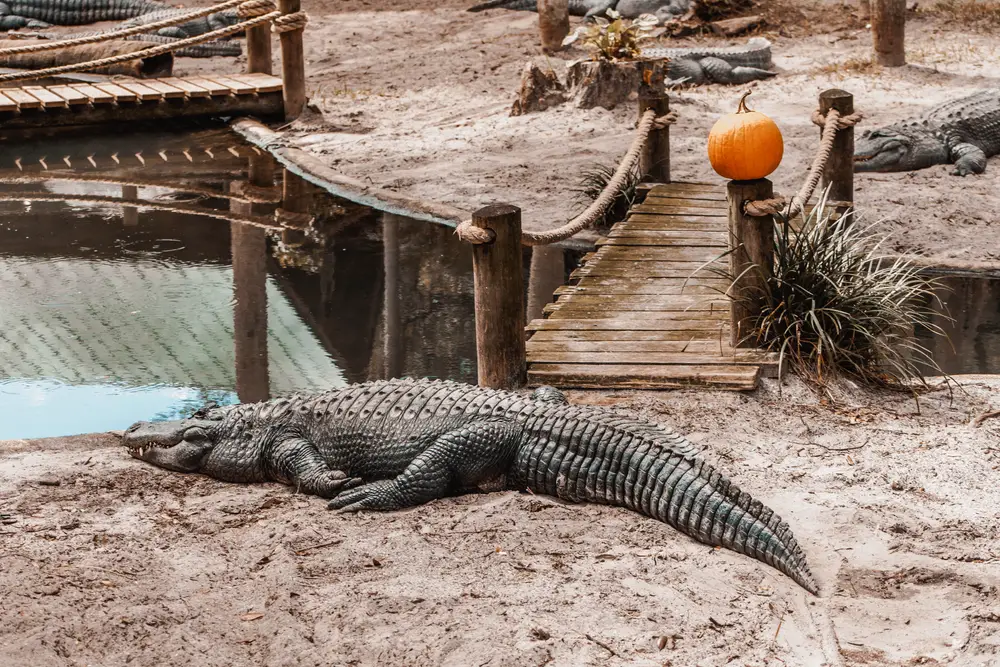
Both alligators and crocodiles are fast, but their speed varies depending on whether they are in water or on land. On land, alligators can run up to 11 miles per hour in short bursts, using a high-walk or a gallop to escape threats. Crocodiles can also move quickly, reaching speeds of up to 10 miles per hour, but they tend to rely on their low-walk to move stealthily. However, in the water, crocodiles are much faster and more agile, reaching speeds of up to 18 miles per hour using their powerful tails.
If you find yourself near one of these reptiles, remember that they are far more dangerous in water than on land. While they can chase you for a short distance on land, they will likely tire quickly. However, in water, you stand no chance of outswimming them. If you are ever in a situation where a crocodile or alligator is in pursuit, it is best to run in a straight line away from them rather than trying to zigzag, as they are not built for sustained chases on land.
8. Nesting and Parental Care: Who Is More Protective?
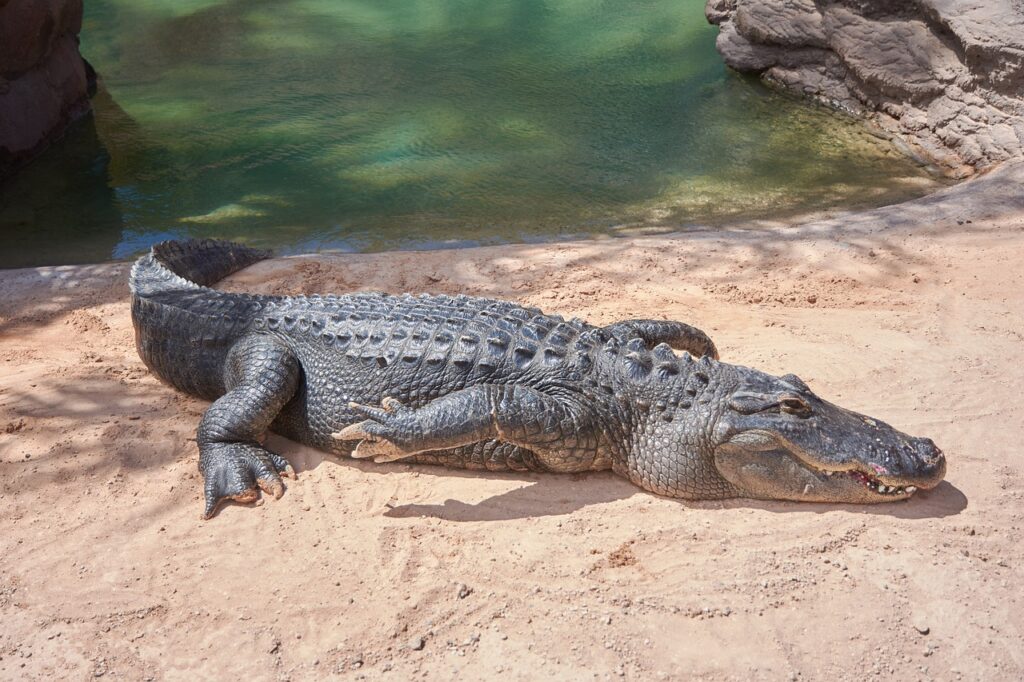
Both alligators and crocodiles are protective of their young, but they differ in how they build their nests and care for their offspring. Alligators build their nests out of vegetation, sticks, and mud, creating large mounds where they lay their eggs. The heat from the decomposing plant material helps incubate the eggs. Once the eggs hatch, the mother alligator will carry the babies in her mouth to water and stay with them for up to two years, providing protection and guidance.
Crocodiles, on the other hand, build their nests out of sand or soil near water. While they also protect their eggs and help their young reach the water, they do not provide the same level of long-term care that alligators do. This means that young crocodiles are more independent from an earlier stage, making them more vulnerable to predators. If you come across a nest, assume that the mother is nearby. While both species can be aggressive when guarding their eggs, alligator mothers are especially defensive and will not hesitate to chase intruders away.
9. Preferred Prey: What Each Species Hunts
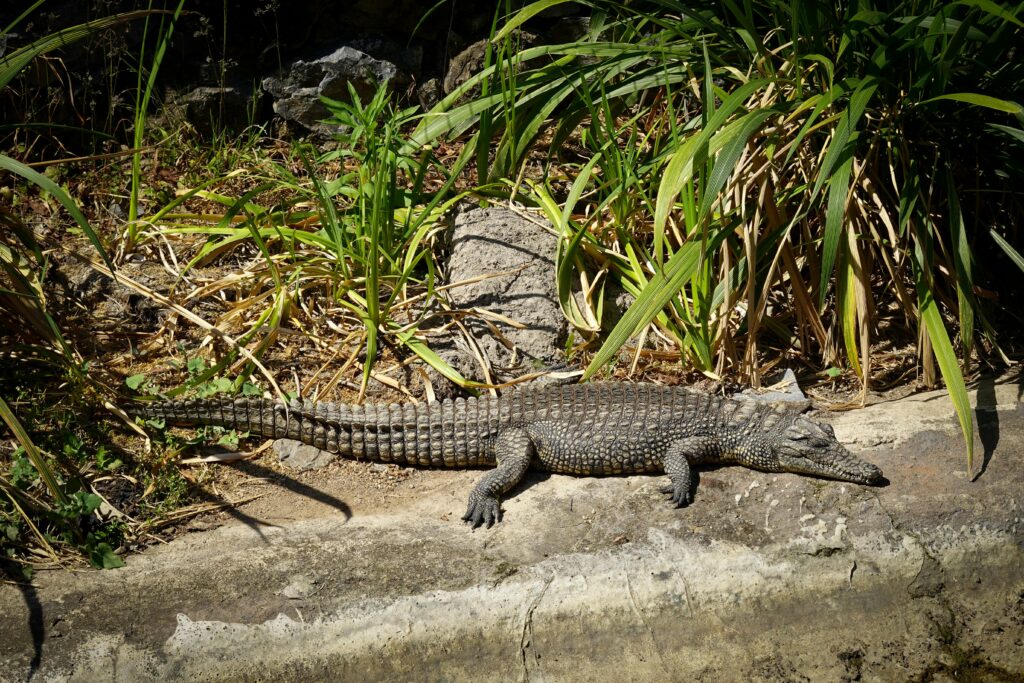
Alligators and crocodiles have different diets, which can also help you determine which one you are dealing with. Alligators prefer smaller prey such as fish, birds, turtles, and small mammals. They are opportunistic feeders but usually stick to prey that fits their bite force and hunting style. Because of their weaker jaw grip compared to crocodiles, they tend to crush and swallow rather than tear apart their food.
Crocodiles, on the other hand, are more aggressive hunters that take on larger prey, including deer, wildebeests, and even sharks in some cases. Their interlocking teeth allow them to grip their prey tightly and perform the infamous “death roll,” a spinning maneuver used to tear flesh apart. If you see an attack in progress and the predator is violently rolling in the water, it is almost certainly a crocodile. Knowing this could help you stay alert in environments where larger prey animals are common, as they indicate the presence of a dangerous crocodile.
10. Lifespan: Which One Lives Longer?
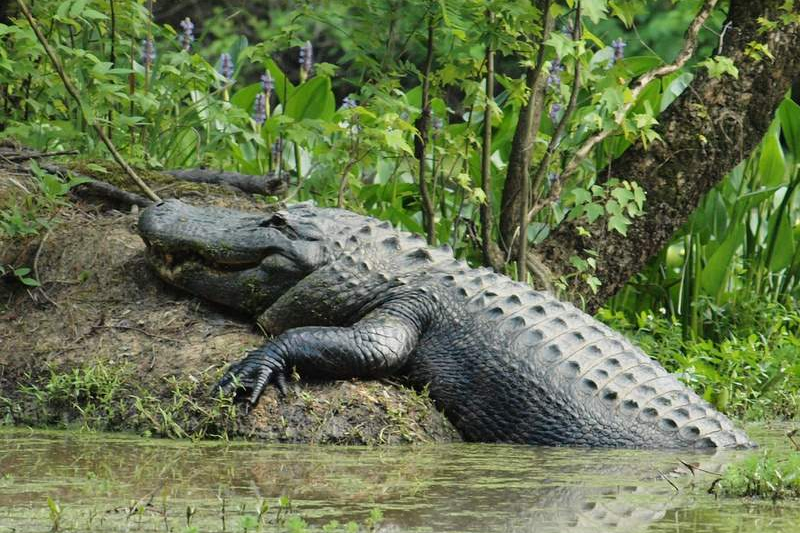
Crocodiles generally have longer lifespans than alligators, with some species living up to 100 years in the wild. The oldest known crocodile, named “Cassius,” is estimated to be over 110 years old. Alligators, in contrast, typically live between 35 and 50 years in the wild, though some individuals in captivity have lived longer. Their longevity is influenced by environmental conditions, diet, and predation risks, but crocodiles’ ability to thrive in various habitats gives them a survival advantage.
This difference might not seem life-threatening at first, but it plays a role in human interactions. Older crocodiles tend to be the most aggressive because they have spent decades perfecting their hunting skills. If you encounter a particularly large and scarred crocodile, it is likely an old survivor that has encountered humans before and may see you as prey. Keeping this in mind can help you gauge the risk level when navigating waters where these ancient predators live.


